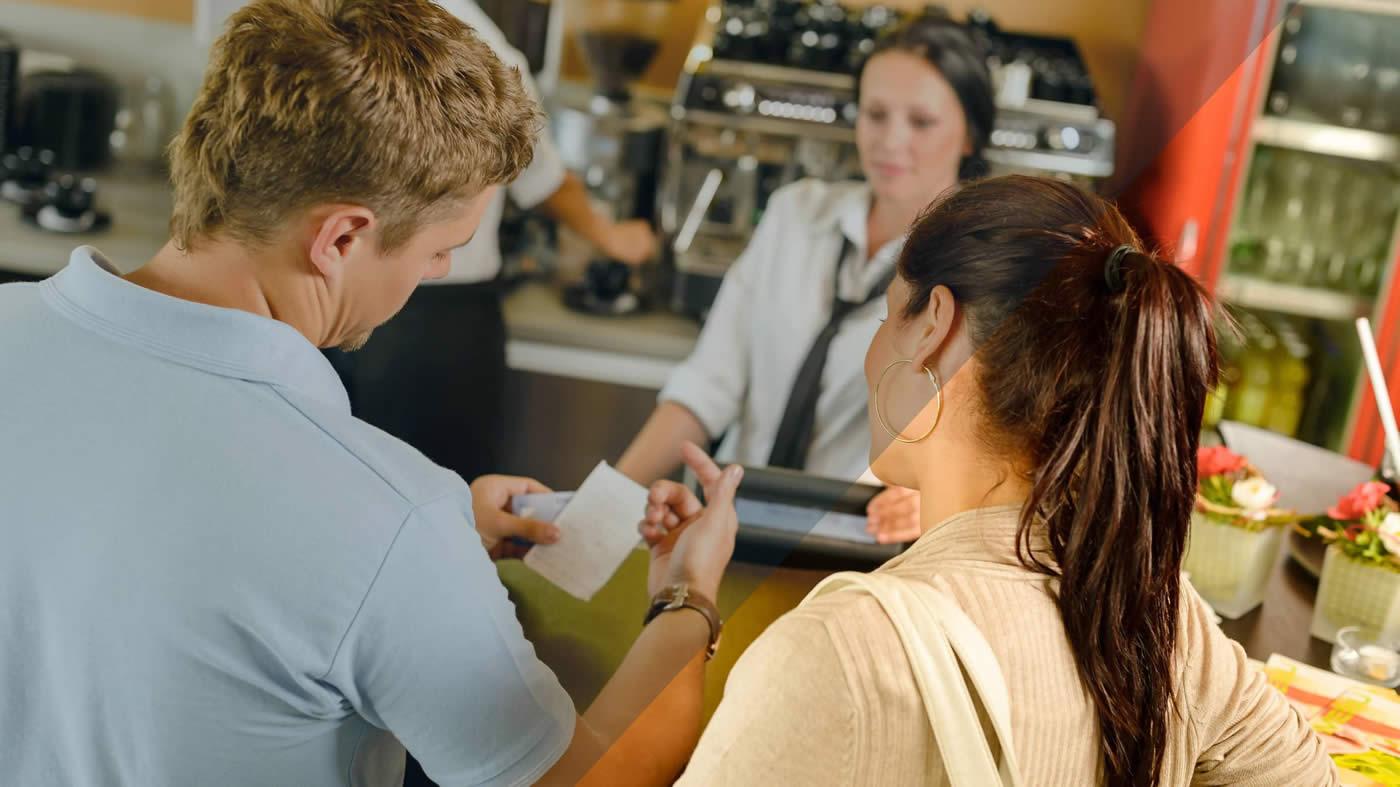Once your overall takings (excluding exempt items and ones outside the scope of VAT) for the previous 12 months exceeds the VAT registration threshold (£90,000) you are legally obliged to register for VAT. However, a small business owner does not need to wait until they hit this threshold – many will choose to register voluntarily as it can be beneficial for them to do so. This article will cover the VAT registration process, what it means for your business and give you a brief overview of your legal obligations.
When do I need to register for VAT?
The VAT registration threshold is updated in April each year; from 1 April 2024, the VAT registration threshold is £90,000.
Once your taxable turnover in a consecutive 12-month period reaches the registration limit, your business will need to register for VAT and charge VAT at the applicable rate to your customers.
There are two methods that you need to be aware of in terms of whether your business has exceeded the threshold:
- The historic method (also referred to as looking back)
Look back over the last 12 months and determine whether the businesses total taxable sales (sales at 20%, 5% or 0%) have exceeded the threshold. If they have, you will have 30 days to register for VAT.
- The future method (or the looking forward rule)
Assuming you are not already registered for VAT, if you think your total taxable sales (sales at 20%, 5% or 0%) will exceed the threshold in the next 30 days alone, you will need to register and start charging VAT immediately. In practice, this method is rarely used as most businesses will have a greater amount of total taxable sales over the last 12 months than they will in the next 30 days, so will already have been registered under the historic method.
How do I register for VAT?
You register in the following ways:
- Register online
To register for VAT online visit HM Revenue and Customs’ (HMRC) website at www.hmrc.gov.uk
You will need to be registered for HMRC Online Services or the Government Gateway to gain access to the VAT Online Service. If you haven’t already registered you can do so here.
- Ask your accountant to register your business for you
You can appoint an accountant to submit your returns and deal with HMRC on your behalf.
Alternatively the GOV.UK website offers more guidance on appointing someone to deal with HMRC on your behalf.
- Register by post
You can register by post using form VAT1. However, HMRC expects all newly VAT registered businesses to submit VAT returns and payments electronically and once you receive your certificate of registration you will need to register for VAT Online Services with HMRC online.
VAT registered businesses are required to keep digital VAT business records and send returns using Making Tax Digital (MTD)-compatible software. Businesses with a taxable turnover below the VAT threshold can also sign up for MTD for VAT voluntarily.
What is voluntary registration?
Voluntary registration is where a business registers for VAT before it reaches the threshold (currently at £90,000).
If a business is making taxable sales (i.e. it is making sales that are charged at 20%, 5% or 0%) it may register for VAT before the compulsory threshold applies. There are various reasons why a business may choose to do this:
- It may incur a lot of start-up costs. The VAT it has been charged can then be reclaimed.
- It may sell zero rated items. No VAT would be charged on these sales, but by registering for VAT, VAT can be reclaimed on the purchases and expenses.
- It may want to disguise its size. A business selling items which are taxable for VAT purposes without a VAT registration number is telling the world that their annual turnover is less than the registration threshold – this could put customers off buying from you.
- If you are selling to other businesses. If your customers are VAT registered themselves, then any VAT charged to them will be reclaimed by them from HMRC.
Another key reason for a small business is to take advantage of the flat rate VAT scheme which can be financially favourable.
How do I reclaim VAT on purchases?
As long as you are registered for VAT you can usually reclaim the VAT paid on goods and services purchased (known as input tax) for use in your business.
You cannot reclaim VAT on purchases that are for private use or that relate to the goods or services your business sells that are exempt from VAT.
In order to claim VAT back on purchases and expenses, you need a valid VAT invoice. The following link shows you what should be included on a VAT invoice.
If a supplier has not sent you a valid VAT invoice and you intend to reclaim the VAT, ask for one! You can’t claim VAT without a valid VAT invoice even when the items themselves include VAT. This website is useful to check that a supplier’s VAT number is genuine and that the VAT number belongs to the business you have purchased from. You would need to be able to show evidence to HMRC that you have taken ‘reasonable care’ when dealing with your VAT affairs. Not checking that invoices are valid VAT invoices may be deemed to be ‘careless’ and penalties could be applied where there are errors.
Information relating to any VAT you wish to reclaim should be included on your VAT return. This is usually submitted to HM Revenue and Customs (HMRC) every three months.
What are my legal responsibilities after registration?
From the effective date of your VAT registration you have certain legal responsibilities, these are outlined below.
-
![]()
Charging the correct amount of VAT
It is your responsibility to ensure that the correct amount of VAT is charged to customers. From a sales perspective, when you are preparing your sales invoices you will need to state the rate of VAT applicable to that sale. If you use, or choose to use, a software package, you will only need to do this once when loading your product list onto the system. Once the rate of VAT has been set, each product will be allocated a code. These codes will then be used when preparing invoices and the VAT (at the relevant rate) will be calculated.
-
![]()
Keeping VAT records
You must keep VAT records for at least six years. You can keep VAT records on paper, electronically or as part of a software program (e.g bookkeeping software). Records must be accurate, complete and readable. More useful information on record keeping for VAT purposes can be found on the GOV.UK website.
-
![]()
Submitting VAT returns
It is your responsibility to ensure that the VAT returns are sent to HMRC by the deadline. Penalties will be charged for submitting VAT returns late. VAT returns are usually submitted quarterly. The deadline for submitting the VAT return is usually one month and seven days following the period in which the return is due, so for example if you were preparing a VAT for the quarter ended 31 March 2024, the deadline for submission of the return would be 7 May 2024. You can check your VAT Return and payment deadlines in a VAT online account, which you will need to register for with HMRC.
-
![]()
Paying VAT due to HMRC
VAT must be paid to HMRC by the same date the VAT return must be submitted. Payments to HMRC are made electronically, e.g through direct debit or internet banking. Most businesses aren’t allowed to pay by cheque. You will usually need to pay your VAT bill by the deadline shown on your VAT return. Visit GOV.UK’s website here for more information on how to pay your VAT bill.
Can I deregister for VAT?
You can deregister for VAT, but only when your total taxable turnover drops below the deregistration threshold, which is £88,000 from 1 April 2024.
You can apply to cancel your VAT registration:
- online – through your VAT online account
- by post – using form VAT7
Alternatively, if you use an accountant or bookkeeper they will be able to help you with this.
It will take about three weeks for HMRC to confirm your de-registration and the official de-registration date. You will receive confirmation to your VAT online account or through the post (if you applied by post).
From the date of deregistration you must stop charging VAT. You are also required to keep your VAT records for six years.
Checklist: VAT registration
This checklist is to help you keep on top of your VAT registration process. Login to save this checklist to your profile for future use. (To register to join and enjoy the benefits of membership click on the link at the top right of the page. It will only take a few minutes to create your profile).
You must be logged in to use this checklist
Share this content

Brought to you by:
AAT Business Finance Basics
AAT Business Finance Basics are a series of online e-learning courses covering the core financial skills every business needs. They draw from AAT’s world-leading qualifications and will quickly build your knowledge on key topics including bookkeeping, budgeting and cash flow.
Visit partner's website












